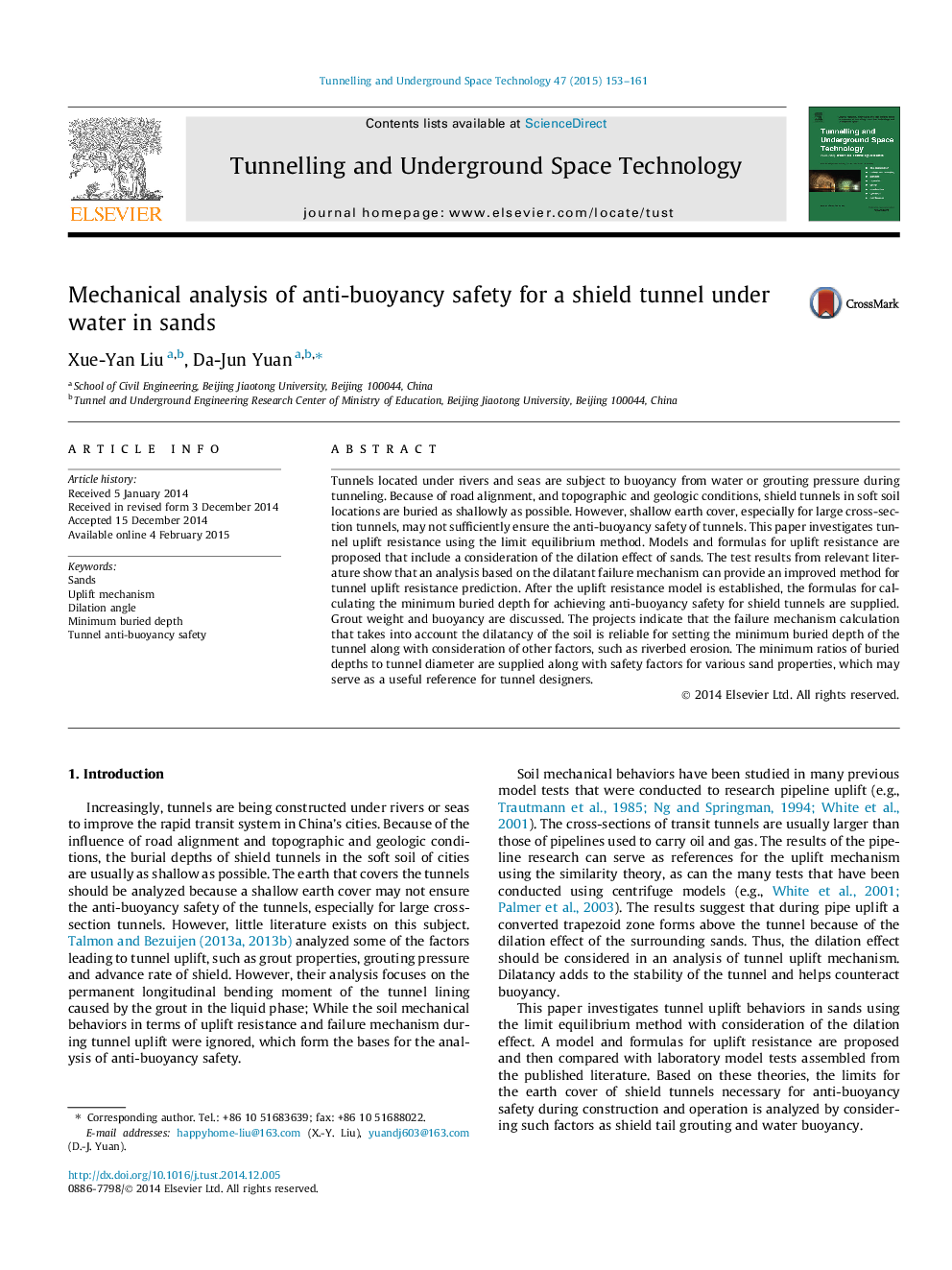| Article ID | Journal | Published Year | Pages | File Type |
|---|---|---|---|---|
| 311795 | Tunnelling and Underground Space Technology | 2015 | 9 Pages |
•Models and formulas for the peak uplift resistance were proposed.•Proposed formulas predict the lower value of the test results exactly.•Ratios of minimum buried depths to diameter are supplied for various sand properties.
Tunnels located under rivers and seas are subject to buoyancy from water or grouting pressure during tunneling. Because of road alignment, and topographic and geologic conditions, shield tunnels in soft soil locations are buried as shallowly as possible. However, shallow earth cover, especially for large cross-section tunnels, may not sufficiently ensure the anti-buoyancy safety of tunnels. This paper investigates tunnel uplift resistance using the limit equilibrium method. Models and formulas for uplift resistance are proposed that include a consideration of the dilation effect of sands. The test results from relevant literature show that an analysis based on the dilatant failure mechanism can provide an improved method for tunnel uplift resistance prediction. After the uplift resistance model is established, the formulas for calculating the minimum buried depth for achieving anti-buoyancy safety for shield tunnels are supplied. Grout weight and buoyancy are discussed. The projects indicate that the failure mechanism calculation that takes into account the dilatancy of the soil is reliable for setting the minimum buried depth of the tunnel along with consideration of other factors, such as riverbed erosion. The minimum ratios of buried depths to tunnel diameter are supplied along with safety factors for various sand properties, which may serve as a useful reference for tunnel designers.
Graphical abstractFigure optionsDownload full-size imageDownload as PowerPoint slide
